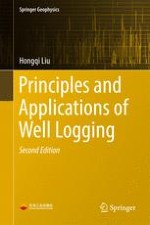2017 | Buch
Über dieses Buch
This book primarily focuses on the principles and applications of electric logging, sonic logging, nuclear logging, production logging and NMR logging, especially LWD tools, Sondex production logging tools and other advanced image logging techniques, such as ECLIPS 5700, EXCELL 2000 etc. that have been developed and used in the last two decades. Moreover, it examines the fundamentals of rock mechanics, which contribute to applications concerning the stability of borehole sidewall, safety density window of drilling fluid, fracturing etc. As such, the book offers a valuable resource for a wide range of readers, including students majoring in petrophysics, geophysics, geology and seismology, and engineers working in well logging and exploitation.
Anzeige
